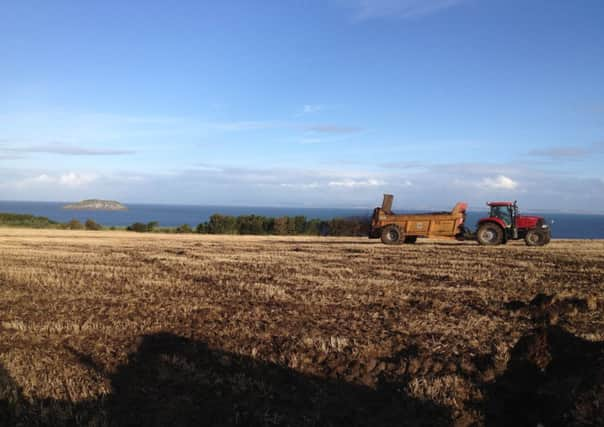Debate over CAP funding transfer heats up


This transfer was certainly top of the agenda for NFU Scotland, with president Nigel Miller expressing his desire to keep any transfer to a bare minimum.
“Given tighter budgets all round we want as much funding as possible to remain to directly support Scottish farmers, producing food and drink while still delivering on the environment and rural economy.”
Advertisement
Hide AdAdvertisement
Hide AdMiller, pictured below, said that money for the RDP would be tight whatever happened but declared that it should be packaged to make it more accessible:
“Pushing back the cumbersome application processes and a focus on reaching more farms with lower cost programmes would be a positive outcome.
He said that the cabinet secretary’s commitment to maintaining funding in the less favoured area support scheme was welcome news for producers in vulnerable areas at a time when the shape of the new common agricultural policy (CAP) remained uncertain.
“The spending priorities look crucial. If we are to see an increase in agri-environment spend at a time when agricultural support is being heavily cut, it must be designed to deliver multiple objectives. Environmental wins can be secured through management programmes which also support real-farm activity,” he said.
He also suggested that spending on forestry creation could be pruned, suggesting that funding an on-farm carbon efficiency drive would be a more rational approach to climate change.
“Worryingly, this consultation also flags up that funds to tackle capital investment projects on farm may be limited. For many of our members, funds to help with small-scale building, draining or investment projects would make a real difference,” said Miller.
But wildlife charity the RSPB took a completely opposing view, calling for the Scottish Government to transfer the full amount possible, 15 per cent or around £85 million per annum, from general farm support under Pillar One to the agri-environment and rural development schemes in Pillar Two.
“This would allow the growth and expansion of agri-environment schemes and help declining farmland species such as corncrake, corn bunting, great yellow bumblebee and rare wild flowers,” said Vicki Swales, RSPB Scotland head of land use policy.
Advertisement
Hide AdAdvertisement
Hide AdTaking corncrakes as an example, she said they were one of Scotland’s great conservation success stories: “The species has been brought back from near extinction thanks to the work of farmers, crofters and conservationists and those all important agri-environment schemes.
“It is vital that we continue this success story and help corncrakes to bounce back after difficult breeding seasons. Making sure there are good nesting sites and plentiful food in the farmed landscape will give the Scottish corncrake the best possible chance of long-term survival,
“We are calling on the Scottish Government to transfer the full 15 per cent of CAP funds to support nature-friendly farmers and crofters and ensure Scotland is a welcoming home for both wildlife and farming.”